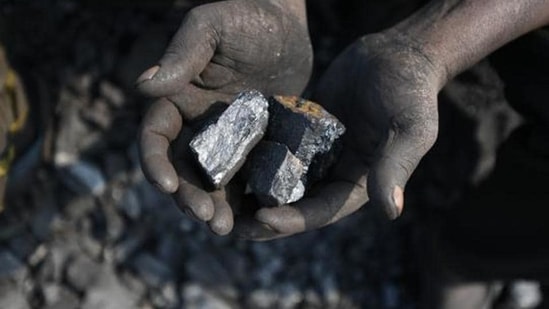India & Climate Change: Implications of setting a net zero target
The study has been authored by Vaibhav Chaturvedi and Ankur Malyan
The Intergovernmental Panel on Climate Change (IPCC) 1.5 C report highlights the criticality of achieving a net zero greenhouse gas future. Many countries have announced their commitments to achieve a net-zero future for their economies. India, while doing much more than its 'fair share' of mitigation, has yet to announce a net-zero year target, presumably owing to the absence of an India-focused analysis on this issue.

This study attempts to address this gap by modelling alternative peaking and net-zero-year scenarios for India, and highlighting its implications for transition in energy-intensive sectors. We model four combinations of peaking and net-zero-year scenarios for India (2030– 2050, 2030–2060, 2040–2070, and 2050–2080) and a combination of technology availability scenarios related to carbon capture and storage (CCS) and hydrogen within each of the policy scenarios. We also present sectoral pathways based on the 16 policy-technology scenario combinations to provide actionable policy insights. We present the implications of these alternative scenarios for the required sectoral transitions across the electricity, transport, building, and industrial sectors in India and provide insights into India’s climate policy. Specifically, for the 2040 peaking–2070 net-zero scenario with no commercial availability of CCS but hydrogen being commercially available, we determine that the following 12 steps across sectors would be critical:
Power sector
1. Coal-based power generation must peak by 2040 and reduce by 99 per cent between 2040 and 2060.
2. Solar-based electricity generation capacity must increase to 1689 GW by 2050 and to 5,630 GW by 2070
3. Wind-based electricity generation capacity much increase to 557 GW by 2050 and 1792 GW by 2070
4. Nuclear-based electricity generation capacity must increase to 68 GW by 2050 and to 225 GW by 2070
Transport sector
5. The share of electric cars in car sales must reach 84 per cent by 2070
6. The share of electric trucks in freight trucks must total 79 per cent by 2070, the rest being fuelled by hydrogen
7. The share of biofuel blend in oil for cars, trucks, and airlines must touch 84 per cent by 2070
Industrial sector
8. Coal use in the industrial sector must peak by 2040 and reduce by 97% between 2040 and 2065
9. Hydrogen share in total industrial energy use (heat and feedstock) must increase to 15% by 2050 and 19% by 2070
10. The industrial energy intensity of total GDP must decline by 54% between 2015 and 2050, and by a further 32% between 2050 and 2070.
Building sector
11. The intensity of electricity use in the building sector with respect to total GDP must decline by 45% between 2015 and 2050, and by another 2.5% between 2050 and 2070.
Refinery sector
12. Crude oil consumption in the economy must peak by 2050 and decrease by 90% between 2050 and 2070.
The country would need to bear economic losses due to shifts in investments patterns across sectors needed to achieve the peaking and net-zero targets. The shift in investments that would need to happen due to stringent decarbonisation policies implies that investment that was otherwise profitable in the absence of climate change mitigation policies would have to be forgone for the sake of more expensive low carbon choices. The cumulative discounted economic cost for India (discounted up to 2015 at 4% real discount rate between 2015 and 2050, and at 2% for years beyond 2050) in the 2030 peaking - 2050 net-zero scenarios ranges from 1353 to 1872 billion USD (2015 prices) between 2030 and 2050, and 12,562 to 19,318 billion USD, between 2050 and 2100. If the net-zero year is postponed to 2080 with 2050 as the peaking year, there would be no economic costs before 2050 (as no additional efforts beyond the ‘business-as-usual' progress would be undertaken prior to 2050), and the economic costs between 2050 and 2100 would range from $6,555 to 9,691 billion. Thus, the earlier the net-zero year, the higher the cost. Availability of CCS lowers the economic losses by 23 per cent between 2030 and 2050, and 32 per cent between 2050 and 2100.
Understanding economic costs are critical not to avoid or delay deep decarbonisation, but to deploy smart strategies to minimise the cost and create an economy of the future in the process. The key to reducing economic losses is to minimise the cost of mitigation technology suite. International financial support in form of low-cost finance has the potential to reduce the overall economic costs. The criticality of low-cost finance and co-development of technologies for a faster reduction in the cost of mitigation technology suite can’t be over-emphasised.
It is critical to emphasise that the policy cost of mitigation should not be the deciding factor while choosing a net zero year. India is one of the most vulnerable countries to climate risks, and delaying India’s net-zero year would lead to additional global warming and associated climate change impacts that the country would have to face. India suffered an economic loss of USD 37 billion in 2018 due to climate change (Global Climate Risk Index, 2021).
Top Indian companies estimate a loss of nearly $100 billion between 2021 and 2025 due to risks posed by the climate crisis (CDP, 2020). As per the World Bank, climate change impacts could reduce India’s GDP by 2.8% per annum by 2050, depressing the standards of nearly half of the country’s population. While taking a call on the choice of a net-zero year, India’s policymakers need to be cognisant of the non-linear risks that climate change poses for India.
The study can be accessed by clicking here
(The study has been authored by Vaibhav Chaturvedi and Ankur Malyan)



